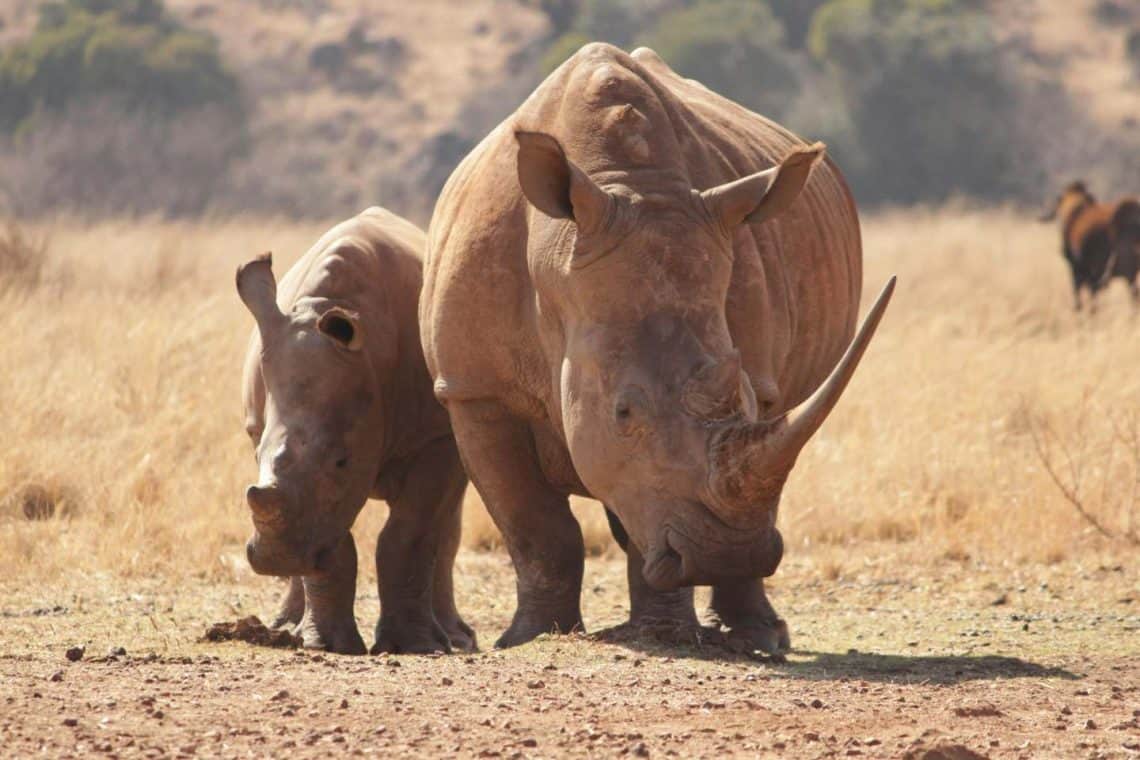In the heart of South Africa’s iconic Kruger National Park, a dramatic confrontation unfolded on September 19, 2025, highlighting the ongoing battle against rhino poaching. Rangers at Crocodile Bridge clashed with suspected poachers, resulting in one man shot and hospitalized, two rhino horns seized, and a manhunt launched for his accomplice. This “Kruger showdown” raises a critical question: Is it a hard-fought victory, or a reminder that poaching syndicates remain highly adaptive?
The Ranger Shoot-Out: One Captured, One on the Run
The incident began when SANParks rangers spotted suspicious activity near the Crocodile River boundary. As they approached, suspects armed with rifles opened fire. A 32-year-old poacher was wounded in the leg and apprehended. Officers found two rhino horns weighing about 4 kilograms combined, along with a bloodied knife. The suspect faces charges including illegal possession of rhino horns, trespassing, and attempted murder of a ranger.
His accomplice remains at large, prompting a manhunt involving helicopters, K9 units, and Hawks’ ground teams. Authorities urge locals and tourists to report sightings of a male in his late 20s wearing dark clothing.
Rhino Poaching Stats: Progress and Persistent Threats
South Africa’s rhino poaching crisis, which peaked at over 1,000 animals lost annually in 2015, shows signs of stabilization. In 2024, 420 rhinos were poached nationwide (a 15% drop from 2023). In the first half of 2025, 195 rhinos were killed—a 15% decline from H1 2024. Experts project a roughly 10% YOY decline by year-end, sparing about 40 rhinos. However, the threat remains, with Kruger accounting for 60% of national incidents.
| Period | Rhinos Poached in SA | YOY Change | Kruger Share |
|---|---|---|---|
| H1 2024 | 230 | – | ~60% |
| H1 2025 | 195 | -15% | ~63% |
| Full 2024 | 420 | -15% from 2023 | ~250 |
| Projected 2025 | ~378 | -10% from 2024 | ~227 |
Despite progress, a rhino is still killed roughly every 15 hours. Poaching syndicates adapt quickly, exploiting porous borders and encrypted communications. The Kruger showdown is both a tactical win and a warning that continuous vigilance is needed.
Anti-Trafficking Technology: Drones, Dehorning, and K9 Units
Kruger is deploying advanced tech to combat poaching:
- AI-Powered Drones: Real-time surveillance over 19,000 sq km, thermal imaging detects human signatures, alerting rangers within minutes, increasing preemptive arrests by 20% in 2025.
- Rhino Dehorning: Reduces poaching risk by 90% in treated areas; over 500 rhinos dehorned in 2025, with safe horn regrowth every 18–24 months.
- GPS Collars & Radar Systems: Track high-risk rhinos and detect intruders along park borders.
- K9 Detection Units: Specialized dogs detect hidden horns and explosives, enhancing patrol coverage.
Donor Support: Funding the Frontlines
Conservation organizations continue fundraising to sustain these initiatives. Examples include:
- Black Mambas Anti-Poaching Unit: All-female patrols reduced poaching by 63% in their zones; seeking $500,000 to train 50 more recruits.
- Helping Rhinos: Monthly donations support aerial patrols and tracking tech; $50 funds one patrol hour.
- International Rhino Foundation (IRF): Supports K9 and ranger training; $1 million target for 2026.
- Greater Kruger Environmental Protection Foundation (GKEPF): Funds border security and youth programs, supported by WWF-SA.
Minister Dion George emphasized on World Rhino Day: “Downward trends are encouraging, but sustained donor investment is crucial to ensure rhinos thrive.”
A Fragile Victory: What’s Next for Kruger’s Rhinos
The poacher’s capture and horn seizure is a tactical win, but with a fugitive still at large and poaching risks persisting, it is a stark reminder of the challenges ahead. The 10% YOY decline is promising, but safeguarding Kruger’s rhinos requires continued innovation, vigilance, and global support. Visitors and locals are urged to report suspicious activity and contribute to anti-poaching efforts to protect this iconic species.
